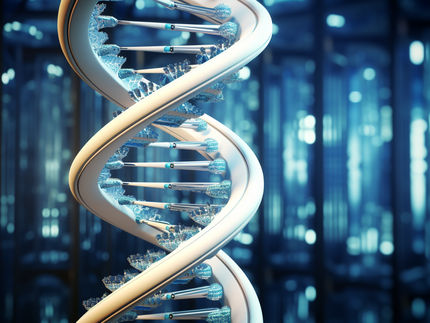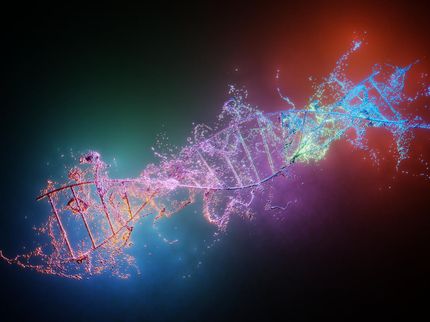Synthetic DNA as Mass Data Storage of the Future
Opportunity for resource-efficient, space-saving long-term archiving of data
Advertisement
Traditional storage solutions are reaching their limits in light of the steadily increasing volume of data generated worldwide. In the BIOSYNTH project, three Fraunhofer institutes are developing a microchip platform for future mass data storage using synthetic DNA. In this interview, Dr. Uwe Vogel, the project’s coordinator and head of the Microdisplays and Sensors department at the Fraunhofer Institute for Photonic Microsystems IPMS, explains how the researchers plan to widen the use of this high throughput-capable, modular system for synthesizing DNA, RNA and peptides to also include biological applications such as screening for harmful substances and development of active ingredients.
Why is there so much demand for alternative storage solutions?
Market research institutes estimate that the volume of data generated worldwide will rise to 284 zettabytes between now and 2027. But the storage capacity available globally on all storage media is growing at a slower rate than the total volume of data. As a result, there is a need for space-saving, low-cost, resource-efficient archiving with high compression and low power use, especially for data that needs to be stored and retained for longer periods but is very seldom accessed.
Why are you relying on synthetic DNA as a basis for storage media in the BIOSYNTH project?
The heredity molecule DNA can store a huge volume of information in very little space for a long time. In addition to genomic information, DNA can also be used to back up binary data. However, this kind of DNA data storage is not taken from nature but rather synthesized in a lab by writing DNA to microchips. We — the Fraunhofer institutes participating in the BIOSYNTH project — view biological mass data storage as holding out great promise for resource-efficient, space-saving long-term archiving of data.
How can DNA be used as data storage?
In digital data storage on a DNA basis, binary data is coded into synthetic strands of DNA. This is done digitally. There are four basic building blocks of DNA: guanine (G), thymine (T), cytosine (C) and adenine (A). These are called nucleobases. So the binary code of zeros and ones is translated into a sequence of the A, C, G and T bases and then transformed into an artificial strand of DNA. However, errors can creep into the synthesis or writing process. On-chip monitoring and specifically developed algorithms and codes allow us to tolerate a certain number of write errors and still store the information that needs to be written without any errors.
How do you manage to increase storage density?
Because microbiological synthesis has been inefficient and resource-intensive in the past, and there was a lack of high-throughput technology — especially for long molecular segments — we’re developing a platform based on microchip production techniques that permits a dramatic reduction in the individual sample volumes and the number of miniaturized reactor cells per chip along with CMOS chip-integrated control that can be addressed individually for each reactor cell.
What is the microchip platform made up of?
The microchip platform is a combination of CMOS-integrated control electronics, miniaturized reaction cells, micro-heaters, OLED dots and photodiodes at the micrometer level. It enables thermal synthesis of the biological molecules with downstream optical monitoring.
How does the synthesis with optical monitoring work?
Silicon-based microchips are equipped with microscopic reaction cells for this purpose. Each reaction cell functions more or less like a mini bioreactor. Algorithms decide which of the reaction cells need to be activated to generate a certain molecule. Control signals transmit the relevant information. Tiny heating elements incorporated into the chip supply each reaction cell with heat, so they heat it up, supporting the synthesis of microbiological molecules such as DNA, RNA and peptides. Each reaction cell is equipped with organic light-emitting diodes (OLEDs) and photodetectors that monitor this process. The OLED supplies an optical impulse. For each bioreactor, a spatially associated photodiode logs the answer of whether the reaction has taken place successfully. Implemented algorithms and codings permit fault tolerance in the biological reaction process.
What requirements will the microchip platform have to meet?
Our goal is for our portable, low-energy platform to replace the large synthesis systems that are currently in use, which take up an entire room. This will enable commercial biologically based data storage. With our microchip platform for writing software-defined nucleotide sequences (DNA, RNA or peptides), we hope to achieve high throughput by applying high integration and series production processes used in microelectronics — always with an eye to low-energy, inexpensive manufacturing.
For which other applications does the microchip platform constitute an important component?
We view using DNA as mass data storage as a long-term objective. In the near future, we will be addressing applications in fields such as biology, biochemistry, environmental and food technology, biocomputing and personalized medicine. For example, we are planning to use the artificially produced biological systems or molecules to detect early, test and analyze the effects of substances and pollutants from the environment or agriculture on the human body — or to influence them, for example for targeted, individually tailored therapeutic effects.

























































